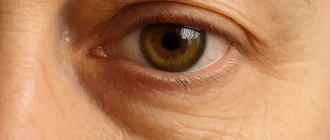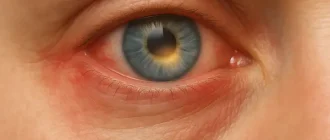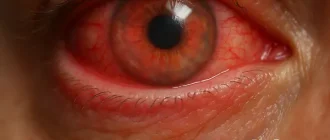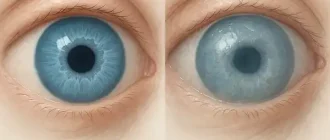What is Age-Related Macular Degeneration (AMD)? If you’ve ever heard about AMD but aren’t sure exactly what it is, you’re not alone. Age-related macular degeneration is one of the leading causes of vision loss in older adults, affecting millions worldwide. It primarily affects the macula, the part of your eye responsible for central vision, which is essential for tasks like reading, driving, and recognizing faces.
But what exactly is going on inside your eyes when you have AMD, and how serious is it? Let’s break down the details.
How Does AMD Affect Vision?
The macula, located at the center of the retina, helps us see fine details clearly. With AMD, the macula begins to deteriorate, causing blurred or distorted central vision. This can make it difficult to read, drive, or even see faces clearly—activities most of us rely on daily.
AMD doesn’t lead to complete blindness because peripheral vision remains intact, but it does significantly affect the quality of life. According to the National Eye Institute, more than 11 million people in the U.S. alone are affected by AMD. By 2050, this number is expected to double (source).
Did you know?
Age-related macular degeneration is responsible for nearly 9% of all blindness cases globally, making it the third leading cause of vision loss after cataracts and glaucoma.
Distribution of AMD Types Among Patients
| Type of AMD | Percentage of Patients (%) |
|---|---|
| Dry AMD | 85% |
| Wet AMD | 15% |
This histogram illustrates the distribution of age-related macular degeneration (AMD) types among patients. Dry AMD is significantly more common, affecting approximately 85% of individuals, while wet AMD accounts for about 15% of cases.
Types of Age-Related Macular Degeneration
AMD comes in two primary forms: dry and wet.
- Dry AMD is the more common form, accounting for about 85-90% of cases. It develops gradually as the macula thins with age.
- Wet AMD, while less common, is more severe. It occurs when abnormal blood vessels grow under the retina and leak fluid or blood, leading to faster vision loss.
Why is it called ‘wet’ or ‘dry’? Simply put, wet AMD involves leakage (fluid or blood), while dry AMD does not. This leakage can cause rapid damage, which is why early detection and treatment are crucial.
Age Distribution of Patients with AMD
| Age Group | Percentage of Patients (%) |
|---|---|
| 50-59 | 20% |
| 60-69 | 30% |
| 70-79 | 25% |
| 80+ | 25% |
This histogram illustrates the age distribution of patients diagnosed with age-related macular degeneration (AMD). It shows that AMD becomes more prevalent with increasing age, particularly affecting those over 60 years old.
Symptoms: How Do You Know If You Have AMD?
AMD often starts subtly. You might not even notice the early symptoms, but over time, you may experience:
- Blurriness in the center of your vision
- Dark or empty spots in your field of view
- Distorted vision, where straight lines appear wavy
These symptoms can gradually worsen, especially if the condition progresses to wet AMD. Regular eye exams are essential, particularly for individuals over 50, as early detection can make a significant difference in managing the condition.
Risk Factors: Who is at Risk?
Is age the only risk factor for AMD? Not at all. While age is a significant factor (most people with AMD are over 50), there are other contributors:
- Genetics: If you have a family history of AMD, your risk is higher.
- Smoking: Smokers are twice as likely to develop AMD compared to non-smokers.
- Race: AMD is more common in Caucasians than in African Americans or Hispanics.
- Diet and Lifestyle: A diet low in leafy greens and high in unhealthy fats can increase your risk.
Did you know?
Smokers are at double the risk of developing AMD compared to non-smokers. Quitting smoking is one of the best ways to lower your risk.
Treatment Options: Can AMD Be Treated?
Is there a cure for AMD? Unfortunately, there is no outright cure for AMD, but there are treatments that can slow its progression, especially in the case of wet AMD.
- Anti-VEGF injections: These medications help reduce the growth of abnormal blood vessels in wet AMD. While not cheap (costs range from $1,500 to $2,000 per injection), they have proven highly effective in preserving vision.
- Laser therapy: In some cases, lasers can be used to destroy abnormal blood vessels.
- Vitamins and Supplements: For those with dry AMD, high doses of specific vitamins (like vitamin C, vitamin E, zinc, and copper) can slow down progression. The AREDS2 formula is commonly recommended by doctors.
Did you know?
The AREDS2 clinical trial found that specific vitamin supplements can reduce the risk of progression to advanced AMD by 25% (source).
Preventive Measures: How Can You Lower Your Risk?
Can AMD be prevented? While you can’t change factors like age or genetics, certain lifestyle changes can lower your risk:
- Quit Smoking: As mentioned earlier, smoking significantly increases your risk.
- Eat a Healthy Diet: Incorporate leafy greens, fish, and foods rich in omega-3 fatty acids.
- Exercise Regularly: Maintaining a healthy weight and keeping your cardiovascular system strong can benefit eye health.
- Wear Sunglasses: Protecting your eyes from UV rays may help reduce the risk of AMD.
Our Editorial Team’s Advice
Age-related macular degeneration is a serious condition that can impact daily life, but understanding the risk factors, symptoms, and treatment options can help you take proactive steps. If you’re over 50, consider making regular eye exams a priority. Maintaining a healthy lifestyle—eating well, exercising, and not smoking—can go a long way in protecting your vision. Remember, early detection is key, and even small changes can make a big difference.





